VAC Renaissance Mk V Preamp and Signature 200 iQ Amplifier
 Valve Amplification Company (VAC) is an American high-end audio equipment manufacturer that has been producing top tier vacuum tube gear since 1990. I remember enjoying their PA-90 amplifier back in the early days, and later, the CPA1/CLA1 preamplifier. They had all of the strengths of tubes and the sound was glorious, especially if you were a tubeophile. I actually remember meeting Kevin Hayes, VAC’s Founder and President, at my very first CES in January of 2003. It had been a very long day and Clement Perry (CP), Dave Thomas and I had a listening session in Franck Tchang’s Acoustic Systems International suite late that evening. I left Tchang’s room, and who did I run into but Kevin Hayes himself, performing some last minute tweaks to one of his preamplifiers before doing a demo with his VAC electronics, driving a large pair of Von Schweikert loudspeakers. Talk about being the model of consistency; I believe he was showing at this year’s AXPONA in Chicago with a large pair of Von Schweikert speakers. This first CES where I met him, I somewhat awkwardly inquired of Hayes the opportunity to review a piece of his equipment. His answer was sort of non-committal, perhaps because DT had asked him first. I came away from that initial conversation confessing that perhaps I would be a little in over my head and not quite ready to do a VAC review. Ironically, DT was never able to garner a VAC review either. Throughout the years, I would see Hayes at one audio show or another and as per usual, he would smile, say hello and go back to conducting his demo.
Valve Amplification Company (VAC) is an American high-end audio equipment manufacturer that has been producing top tier vacuum tube gear since 1990. I remember enjoying their PA-90 amplifier back in the early days, and later, the CPA1/CLA1 preamplifier. They had all of the strengths of tubes and the sound was glorious, especially if you were a tubeophile. I actually remember meeting Kevin Hayes, VAC’s Founder and President, at my very first CES in January of 2003. It had been a very long day and Clement Perry (CP), Dave Thomas and I had a listening session in Franck Tchang’s Acoustic Systems International suite late that evening. I left Tchang’s room, and who did I run into but Kevin Hayes himself, performing some last minute tweaks to one of his preamplifiers before doing a demo with his VAC electronics, driving a large pair of Von Schweikert loudspeakers. Talk about being the model of consistency; I believe he was showing at this year’s AXPONA in Chicago with a large pair of Von Schweikert speakers. This first CES where I met him, I somewhat awkwardly inquired of Hayes the opportunity to review a piece of his equipment. His answer was sort of non-committal, perhaps because DT had asked him first. I came away from that initial conversation confessing that perhaps I would be a little in over my head and not quite ready to do a VAC review. Ironically, DT was never able to garner a VAC review either. Throughout the years, I would see Hayes at one audio show or another and as per usual, he would smile, say hello and go back to conducting his demo.
Fast forward to this spring, and surprise, surprise, CP approaches me with the opportunity to do a VAC review. Be still my beating heart. I told him I’d be interested but that I’d have to check my calendar first. That took all of one second. I was just glad Hayes wasn’t there in person to see me drooling. What was even more intriguing was that the review would encompass reviewing a VAC amp and preamp. I figured Hayes was making up for that lukewarm discussion we had fourteen years ago. After a couple of email exchanges with Hayes, it was decided that I would review the VAC Renaissance Mk V preamplifier and the Signature 200 iQ amplifier. Not long after the VAC gear arrived I attended the AXPONA show. I went into the VAC suite where I met Hayes’ wife Darlene. She was graciously helping visitors with first-line questions, passing out literature, offering to help with requests and describing what was going on in the room. Then I spotted Hayes having a good time spinning vinyl. I didn’t want to seem like a big deal so I didn’t walk up to him right away choosing to wait until he walked in my direction before I would say “hello.” When the time came he walked right by me, not once, not twice, but three times. Finally, I just came up to him and said, “Kevin Hayes, brother, I’m Mike Wright, I’m currently working on a review of your products.” As is his way, he smiled, shook my hand, apologized for the unintended slight and reminded me that 14 years is a long time between “hellos.” Sharp. The man is sharp. We proceeded to have a rather lengthy and pleasant discussion about all things VAC.
Construction
As the name implies, Valve Amplification Company offerings are based on vacuum tube designs. I always felt VAC gear was beautifully made, inside and out, and thoughtfully laid out. The sound always matched the construction and design. When the VAC pieces arrived they were neatly double boxed. No surprises there. I made note of a couple of things when I opened the boxes. The first was of how solidly built the pieces were. These are not lightweights and they do have some solidity to them. The Signature 200 iQ in particular was heavy enough that I couldn’t barely lift it out of the box without possibly damaging some of the packing material. Eventually, I felt it wiser to wait until a friend of mine came by and helped me lift it out of the box. The amps stated weight is 100 lbs. but I would have thought it was at least 110 lbs. I must be getting older.

The other thing I noticed was that the Renaissance Mk V was not quite as ornate as the other VAC preamps of recent vintage. There were no large volume or selector knobs and no fancy metal sculpted faceplates. I began to wonder if this was a conscious move to make the product look more “entry level” or something. I mentioned this to Hayes and he pointed out that he had gone away from the fancy casework and knobs in order to put more money “under the hood.” I, for one, applaud him for this. Per Hayes, ”The Renaissance Mk V and Signature 200 iQ actually have the same edge chamfer (bevel) found on the Signature and Master Preamplifiers, plus an addition bevel groove dividing the faceplates into upper and lower sections. The overall 3/8″ thickness is the same as the Signature Preamplifier. The chrome plating of the knobs and trim bar are the same. The major difference is simply that the chassis height is reduced, which precludes the use of the very large selector and volume knobs seen on the other preamps. I thought of it as a streamlined look, which also contributed a bit to lower the retail price.” Upon closer examination, I stand corrected. These products actually have a very understated elegance to them. I also noticed both pieces didn’t just have black faceplates, but there are softly reflective blue flecks in the finish. According to Hayes it’s “hand-rubbed, multi-coat, catalyzed two-part polyurethane wet-coat paint with metallic content.” I can assure you that the look is quite nice. Everything about this pair was top notch.
The exterior of the Renaissance Mk V is somewhat minimalist. On the right side of the faceplate are controls for volume and input selection. In the middle of the faceplate is a recessed area that contains (from left to right) a “status” LED (green for play and amber for mute), a toggle switch for “Mute”, a toggle switch for “Mode” (stereo and mono), and a sensor for the remote control. On the left side of the faceplate is the VAC logo that light up blue when the preamp is turned on. On the rear of the preamp, you have L1 and L2 single-ended and balanced and a single output that you can choose to be single ended or balanced. There are also two sets of single-ended inputs which are for the MC or MM phono inputs if the preamp is fitted with the phono board option. There is a switch next to each pair of these input connectors, one for cartridge loading and the other is to choose between MC and MM. If you have a Renaissance Mk V without the phono option, then this becomes a 3rd line input. There are check boxes on the rear to indicate the configuration. I did take a peek at the inside of the Renaissance Mk V and it is all first class construction and top-rated parts, down to the Lundahl transformers used for the MC and MM inputs. The power to the Renaissance Mk V is delivered by an external power supply that connects to the preamp via a 5 ft. umbilical cord. The umbilical cord connector has a notch that helps guide the connection of the power supply cord to the preamp.
Hayes is confident that the Renaissance Mk V’s power supply can drive any amplifier. According to him, “Even if the amp’s input impedance is less than 1,000 Ohms! The Renaissance Mk V’s line section is really more of a small Class A power amplifier than a conventional preamplifier, and the power supply has the oomph to support this. In the PSU there are separate high voltage rectifiers and filter banks for the left and right channels. These are further separated for the phono and line stages in the audio chassis.” On the back of the power supply is the requisite IEC connector with a compartment that holds the fuses and on/off switch. Part of the power supply is designed to send power to the line stage and the other is tasked to drive the phono stage. The included remote control is well built and has three buttons for mute, volume up and volume down.
The 200 iQ amplifier is even more interesting due to its faceplate layout. The most interesting aspect of this amplifier is its patented “iQ” circuit, which if I have this right, continuously monitors the power tubes and maximizes its output so that you always have power tubes working at their best. When a tube begins to fail, you will see an LED on the front of the amplifier that lights up “green” which lets you know that the tube is beginning to show its age and you may want to consider replacing it. Even at this juncture, the iQ circuit is still working to get the most performance out of the amp that it can. When the tube dies, you get a red LED on the faceplate that lets you know it’s time to change the tube. Once you get a red LED, the amp shuts down and will not play. Once you replace the tube, the iQ circuit optimizes it to perform to its best and you’re up and running again. No need to bias the tube and no need to worry about it operating in the system. I’ll say more on the operation of this feature later in the review.
Externally, the first thing I noticed was the power meter in the upper middle of the faceplate. Next, there are two knobs one on either side of the faceplate. On the left side, there is a 3-position knob. In the first position, it powers the amp “Off.” In the second position it powers the amp (as well as the power meter) “On”, and in the third position, the power meter turns off. The knob on the right allows the user to view the condition of each output tube. However, as Hayes has pointed out, the iQ circuit is taking care of this and that monitoring the power tubes becomes a “redundant function.” Since no one has asked him if the circuit is working, and as no one has presented any issues with it, he is considering not having this knob in any other models. In between the two knobs is where the LEDs are located on a trim bar that lets you know when a power tube is beginning to show its age and may need to be replaced (green) soon, and when it actually does need to be replaced (red). Behind the faceplate is where three large 14 lb. transformers are contained inside two large shells. The tube compliment consists of four KT-88s and four 6SN7 signal tubes. There is a tube cage that covers the tubes, or if you prefer, you can remove it if you choose to. The tubes do generate some heat that you will feel the warmth if you’re standing over the amp, but never really got more than warm. On the back of the amplifier, from left to right, are an IEC connector, single-ended and balanced input connectors, a stereo/mono switch (if you want to run two 200 iQs in mono), and the speaker connectors outlaid with ground, 4-8, 2-4 and 1-2 Ohm taps. I have a lot more vital information regarding this point to share with you later in this review.
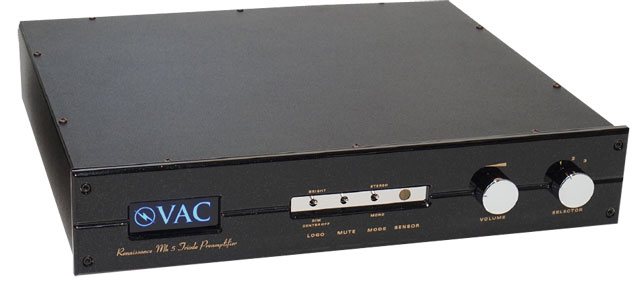
The Sound of the Renaissance Mk V
Sonically, the Renaissance Mk V preamp was a difference maker cold, straight out of the box. I have rarely been captured by a piece of equipment, especially when I first plug it in, as I was with this preamp. The other time was probably with the Hemingway Audio cables from Korea. The preamp, seemingly, allowed me to listen to music in a way I had not heard before as it took control of my system. The music exhibited ease and naturalness to a greater degree than with my reference Purity Audio Silver Statement. I was not expecting this, though it could have been because the Renaissance Mk V spoke with great authority and compelled my Bully Sound Company 100 watt mono-amps to deliver the goods to my Wilson Sashas, thus taking musical enjoyment to another level. This preamp possesses a large tonal palette and delivers natural tone and timber. The aerial nature of the high frequencies lent itself to a wide, deep and highly dimensional soundstage that was reproduced realistically in my listening room. There were albums that I would play that all of a sudden had an atmosphere of liveliness that I found to be highly satisfactory. Vocalists performed songs with a heightened sence of expression and inflection was spontaneous and real. Everything from soft sweet mellifluous tones, to guttural utterances were well placed and made sense within the scope of the tune being performed. The Renaissance Mk V was also very communicative as instrumentalists were able to convey their message through their playing. It was almost like being right there in the club or venue and having this intrinsic conversation with the band or the singer. I borrowed DT’s Pass X-15 phono, which is an excellent piece, and the phono section in the Renaissance Mk V outperformed it in every parameter in which I could think of to compare the two. The Pass X-15 sounds organic, the Renaissance Mk V sounds magical. The Pass X-15 had a lot of detail while the Renaissance Mk V’s phono section was more authentic.
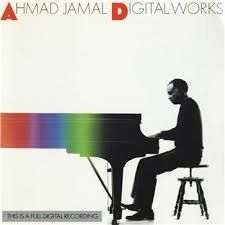 The very first album I played that won me back over immediately to the strengths of vinyl was Ahmad Jamal’s Digital Works [Atlantic 81258-1-G]. On no other track than “Poinciana”, of course, was this clearly evident. My ears pricked up immediately with the first bars of the track, but it is was what happened a third of the way through that caused the Renaissance Mk V, and its built in phono section that caught my attention. A third of the way through this track, the percussionist, Iraj Lashkary, starts to hit a triangle that stood out because of its purity of tone and its decay. He hits that triangle over, and over and over, and what was so attention grabbing was the decay lingered and just hung there, in midair and decayed naturally. The decay was not too quick as it usually is with digital, but it was natural. He would strike the triangle, and by the time he hit the next strike, the decay was still lingering. That is what caught my attention and grasped hold of me tightly and made me think to myself, “No, this is right, this is how it’s supposed to be”. The Renaissance Mk V returned to me, a greater appreciation for music, and reawakened and enjoyment of all things analog.
The very first album I played that won me back over immediately to the strengths of vinyl was Ahmad Jamal’s Digital Works [Atlantic 81258-1-G]. On no other track than “Poinciana”, of course, was this clearly evident. My ears pricked up immediately with the first bars of the track, but it is was what happened a third of the way through that caused the Renaissance Mk V, and its built in phono section that caught my attention. A third of the way through this track, the percussionist, Iraj Lashkary, starts to hit a triangle that stood out because of its purity of tone and its decay. He hits that triangle over, and over and over, and what was so attention grabbing was the decay lingered and just hung there, in midair and decayed naturally. The decay was not too quick as it usually is with digital, but it was natural. He would strike the triangle, and by the time he hit the next strike, the decay was still lingering. That is what caught my attention and grasped hold of me tightly and made me think to myself, “No, this is right, this is how it’s supposed to be”. The Renaissance Mk V returned to me, a greater appreciation for music, and reawakened and enjoyment of all things analog.
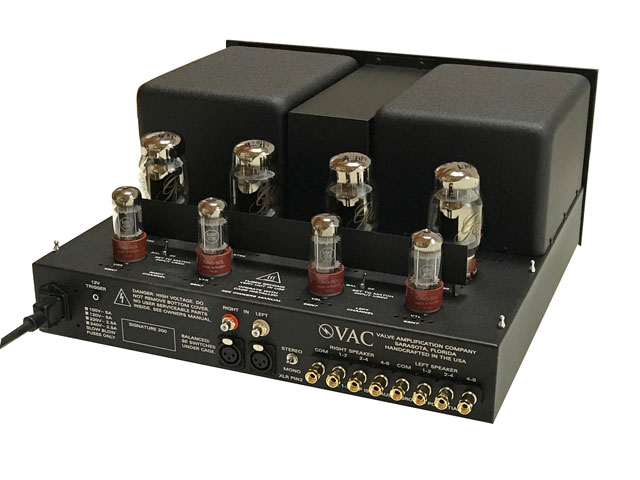
The Sound of the Signature 200 iQ Amplifier
The Signature 200 iQ amplifier really delivered the goods and was quite the surprise. After I finally got it burned in there were truly some great listening experiences that awaited me. Once the Signature 200 iQ got rolling, it spoke with an authoritative voice that presented music with a sense of reality and fidelity that I had not enjoyed with an amplifier in quite some time, probably because I have been listening quite a bit of late with solid state amplifiers. Please let me explain. Usually, with solid state amps, when, for example, a kettle drum is struck, the hammer hits the drum skin, the impact makes the notes roll and you have great bass that you can hear and feel in your room. With the Signature 200 iQ, when the hammer hits the drum skin, you get the feeling that you are hearing the cavity of drum vibrating on the inside before you get this explosion of sound that emanates from the entire body of the drum. It is so authentic sounding that it was startling at first. Listening to classical music with the Signature 200 iQ was next level to almost anything I had heard anywhere else and made me keenly aware of just how atmospheric and ethereal these recordings can be. The Signature 200 iQ was just as at ease playing classical as it was playing pop, rock, R&B, reggae, blues and any other genre of music I could think of playing. Bass was always deep, full and authoritative when the music required it to be. I felt the Signature 200 iQ competed in the low end with most amplifiers, including my reference Bully Sound Company mono-amps, that I considered to be authoritative, powerful, and most of all, accurate as it descended the depths. The bass was never bloated or boomy, nor did it exaggerate bass information but sounded faithful to the tune. Attributes like midrange, upper frequencies, transients, soundstage reproduction, and presence were all reproduced with an air of realism and were present in abundance.
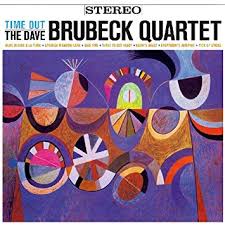 The sound of the Signature 200 iQ run as a stereo amp was extraordinary. It drove my Wilson Sashas with a high degree of refinement but at the same time, there was a feeling that the music was being delivered with verve and vivacity. The Dave Brubeck Quartet album Time Out [Columbia CS8192] sounded so amazingly rich that almost nightly, I would play the entire album. This group certainly had a symbiotic relationship and is filled with performances that were sensational. I could listen to Joe Morello play drums all night long. One aspect of his playing that I especially enjoyed was when he would attack the drums and deliver some drum strikes with emphasis as though he was making a statement and ending it with a punctuation mark. The Signature 200 iQ did a fantastic job of delivering the performers on a vividly portrayed stage that was sizable and spatial.
The sound of the Signature 200 iQ run as a stereo amp was extraordinary. It drove my Wilson Sashas with a high degree of refinement but at the same time, there was a feeling that the music was being delivered with verve and vivacity. The Dave Brubeck Quartet album Time Out [Columbia CS8192] sounded so amazingly rich that almost nightly, I would play the entire album. This group certainly had a symbiotic relationship and is filled with performances that were sensational. I could listen to Joe Morello play drums all night long. One aspect of his playing that I especially enjoyed was when he would attack the drums and deliver some drum strikes with emphasis as though he was making a statement and ending it with a punctuation mark. The Signature 200 iQ did a fantastic job of delivering the performers on a vividly portrayed stage that was sizable and spatial.
VAC Signature 200 iQ as Mono-amp
As good as the a single Signature 200 iQ in stereo is, and it is excellent, having two of them configured as mono-amps is other-worldly special. The very first thing that hit me when listening to two of them in mono was the ease with which it does everything. Whether it was classical music in full tilt, such as toward the end of the Firebird Suite, or listening to cacophonous chorale music, or just having those friends over that just need to listen loud, the Signature 200 iQ was orderly and articulate with it all. I couldn’t believe how wide and deep the soundstage had become, and it was already good with a single amp. I was astounded to hear the stage dimensions increase before my very eyes. The other noteworthy discovery was not just how clear and vivid performers were at the front of the stage, but how just as clear and present performers at the rear of the stage were as well. If you go to a jazz club, no matter how the stage is laid out, you hear the performers at the rear of the stage as clearly as the front. The Signature 200 iQ captures this bit of realism, again, as well as it would if you were there at the event. Low end extension and authority were room shuddering. I, mistakenly, didn’t think tube amplifiers could perform that way, but the Signature 200 iQ caused me to reconsider change my opinions about my conclusions.
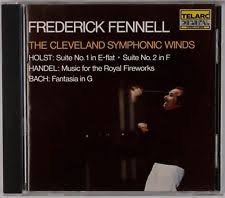 The Frederick Fennell and The Cleveland Symphonic Winds album Holst: Suite No.1 & 2 / Handel: Music for the Royal Fireworks / Bach: Fantasia in G [Telarc] was an absolute tour de force for an audio system. This album has it all, in terms of dynamics and kinetic energy, but also with the spaciousness and expanse of the hall. The 200 iQ stereo amp in mono performed effortlessly reproducing thunderous bass transients that rumbled through my room. It also did a good job of revealing the layering of the orchestra and allowing me to hear, distinctly, how the orchestra was divided. It was much more pleasurable to listen to this work so as to feel transported to the event than it was to do too much critical listening. Also of note was the fact that I used the phrase “thunderous bass” in conjunction with a tube amplifier. The Signature 200 iQ run in mono is audibly spectacular.
The Frederick Fennell and The Cleveland Symphonic Winds album Holst: Suite No.1 & 2 / Handel: Music for the Royal Fireworks / Bach: Fantasia in G [Telarc] was an absolute tour de force for an audio system. This album has it all, in terms of dynamics and kinetic energy, but also with the spaciousness and expanse of the hall. The 200 iQ stereo amp in mono performed effortlessly reproducing thunderous bass transients that rumbled through my room. It also did a good job of revealing the layering of the orchestra and allowing me to hear, distinctly, how the orchestra was divided. It was much more pleasurable to listen to this work so as to feel transported to the event than it was to do too much critical listening. Also of note was the fact that I used the phrase “thunderous bass” in conjunction with a tube amplifier. The Signature 200 iQ run in mono is audibly spectacular.
Final Thoughts
Obviously, this is not the same VAC sound that I was used to from several years back. Until very recently, I had unfairly stereotyped the “VAC sound” as being warm and romantic in the midrange, soft on top and with bass though extended, not having a lot by way of detail and information. I must also add, to be fair, that I have not had much time spent listening to the VAC’s Statement Series. Obviously, I missed a period of maturation for the “VAC sound” because now VAC is dynamic, detailed, and with transient response and musical detail that are off the chart. Still, VAC has maintained that natural and realistic sounding midrange that makes harmonious interactions totally enjoyable.
Having the VAC Renaissance Mk V preamp and Signature 200 iQ was an eye-opening experience that caused me to change the way I view music in several ways. For instance, the Renaissance Mk V that I reviewed had a built in phono section. This phono section was one of the better phonos that I have had the experience of listening to. I have a custom built NOS DAC built by Gilbert Yeung at Blue Circle Audio and every time I listen to it, I come away saying to myself that music can’t get a whole lot better than this. But when I listen to albums through the phono section of the Renaissance Mk V it is clearly, obviously better. Yes, analogue is still better than digital. I hate saying it. Not only did I have to come to grips with that after night after night of agonizing acceptance, but I had to ask myself when and why did I start to think that digital music was reproduced better than analogue. I had entertained a Klyne phono preamp, which is very good, by the way, and an ASR Mini Basis, probably not as good, and slipped into a digital coma. The phono section of the Renaissance Mk V snapped me back into an analogue reality real quick and I couldn’t be happier with it. I even had friends come by with CDs or we would listen to server based music and the VAC phono shined every single time. I find it very hard to believe that Hayes says he has two other phonos and both of them outperform the phono section in the Renaissance Mk V. I don’t want to resurrect the old digital versus analogue debate, only to say that if you still spin records, you can get a Renaissance Mk V with or without the phono and add it later if you want to hear how special analogue still sounds.
Another eye opening experience came via the Signature 200 iQ amplifier. I put the requested 200-240 of burn-in time on the amp and while it sounded very good, it did some things better than my BSC mono-amps did in terms of presence, liveliness and being ever so slightly more musical. I accepted this and started working on my review with that in mind. One evening, one of my good audiophile buddies asked me had I tried listening to the Signature 200 iQ on the 1-2 Ohm tap. I responded to him with a “why would I do that?” kind of answer. My Wilson Sashas are 4 Ohm speakers so I surmised the 2-4 Ohm tap should be plenty. Deep into the night, I thought some more about it and figured nothing ventured, nothing gained. I would be an easy enough switch so I did it and was stunned at the improvement. I was not prepared for the advancement in performance. I called Hayes the next day and explained to him what had happened because I was concerned that maybe I was stressing out the tubes or something going on inside of the amplifier. Then Hayes asked me to describe what I heard. I told him how the stage dimensions grew, the level of musicality increased, dynamics were life-like and the bass, though not quite as impactful as with my BSC mono-amps, had the same extension and sounded more real. Hayes said that I had not done anything to the Signature 200 iQ but found an impedance that the speakers liked better which allowed the amp to drive them more sufficiently. Hayes explained that is why he designs his amps with different taps on VAC amps because not every situation calls for the same impedance for everyone’s particular situation. Still not convinced I was hearing what I was hearing, I had a couple of pals come by and they, having heard the Signature 200 iQ drive the Sashas on the 2-4 Ohm tap, were just as surprised as I was at the amount of improvement rendered just from changing the speaker terminal taps. I have one other experience to share with you and that has to do with the amps iQ circuit. The very first time I turned the amp on to
 do some serious listening, after burn-in, one of the KT88s gave me a ten second howl and blew on me. As advertised with the amps iQ circuit, a red LED came on that told me which tube died on me. Not having any extra KT88s around, Hayes offered to send me another pair out the next day and just like that I was back in business. I didn’t have to try and figure out which tube blew and I didn’t have to concern myself with would there be some kind of sonic tube imbalance going on.
do some serious listening, after burn-in, one of the KT88s gave me a ten second howl and blew on me. As advertised with the amps iQ circuit, a red LED came on that told me which tube died on me. Not having any extra KT88s around, Hayes offered to send me another pair out the next day and just like that I was back in business. I didn’t have to try and figure out which tube blew and I didn’t have to concern myself with would there be some kind of sonic tube imbalance going on.
I say all this because, one of the reasons I stopped wanting to own tube amps is because of the hassle of tubes. VAC’s iQ circuit takes those concerns out of the equation. If I owned a Signature 200 iQ, all I’d need to do is keep 1-2 extra power tubes available and I would never have power tube concerns. With the iQ circuit, I would never have an excuse not to use a tube amplifier. With this amp’s sonic strengths and flexibility, and the ability to get an absolutely marvelous built-in phono section, the VAC Renaissance Mk V preamplifier and Signature 200 iQ amplifier, whether used with other equipment, but especially when used with each other, get the highest recommendation I can give them.


mike wright
Specifications:
VAC Renaissance Mk V Preamp
Type: Vacuum tube stereo preamplifier with MM and MC phono stage
Frequency Response: 5Hz to 210Hz (-3dB)
Gain: 10dB
Inputs: Two line inputs, selectable for RCA or XLR balanced (plus third RCA line input or optional phono stage)
Outputs: Selectable for RCA or XLR balanced (pin 2 hot studio standard)
Tubes: Two 7308, 6922, E88CC, ECC88, or 6DJ8 (E88CC supplied)
Absolute Phase: Non-inverting from all inputs to all outputs
THD: Maximum Output: > 8 V RMS
Output Impedance: < 150 Ohms, 20Hz to 20Hz
Maximum Input: Infinite signal (attenuation precedes the gain circuitry)
Recommended Output Load: >300 Ohms
External Power Supply: detachable umbilical cable, detachable IEC power cord
Voltage: May be ordered for 100v, 120v, 220v, or 230/240v operation
Remote Control included
Finish: Hand-rubbed gold-flake gloss black lacquer with chrome knobs standard.
Hand-rubbed metallic gloss silver lacquer with chrome knobs special order with additional cost.
Warranty: Two years parts and labor, excluding tubes (USA, see manual for full details)
Dimensions: Audio chassis is 45.7cm x 41cm x 10cm ((H x W x D))
Weight: 9 kgs.
Power supply 15 cm x 33 cm x 11 cm, 7 kg.
Phono Stage (optional)
Tubes: Three 12AX7
Gain: 42dB MM and 66dB MC
Frequency Response: RIAA 20Hz to 20 KHz, 10 Hz to 80 KHz @ -3dB
Channel Separation: >80dB @ 1 KHz
Maximum Input: >130mV @ 1 KHz, MM > 13 mV, MC
MC Load Impedance: Selectable, 470, 300, 250, 200, 150, and 100 Ohms
MM Load Impedance: 47k Ohms
Overload: >117MV @ 1KHz = 8 Volts RMS output; 460mV @ 10KHz
Residual Noise: Less than 3 mV at output (SNR greater than approx. 69dB)
Price: $12,900 with phono section, $9,900 without phono
VAC Signature 200 iQ Amplifier
Switch Settings: Fully balanced or single-ended input, stereo or mono operation
Power Output: 100 watts/channel stereo continuous, 200 watts mono continuous
Speaker Matching Taps: 1-2 Ohms, 2-4 Ohms, 4-8 Ohms
Frequency Response: 4 Hz to 85 KHz, +0/-3 dB
Full Power Bandwidth: 13 Hz to 70 KHz, +0/-3 dB
Residual Noise: Typically > 95 dB below rated output
Input Impedance: 200k Ohms, Stereo, Balanced; 100k Ohms, Stereo, Single Ended; 100k Ohms, mono, Balanced; 50k Ohms, mono, Single Ended
Gain: 30 dB, Stereo, Balanced; 33 dB, Stereo, Single Ended; 31 dB, Mono, Balanced; 34 dB, Mono, Single Ended
Output Polarity: Non-inverting; Balanced input is Pin 2 positive
Tube Complement: 4 x type 6SN7; 4 x type KT88; Compatible with KT120 – (electrically compatible with KT150 but may be too tall to fit under the cage)
Operating Voltages: Available factory set for 100, 120, 220, or 230/240 volt operation
Connectors: Cardas rhodium RCA jacks; Neutrik XLR jacks; Cardas rhodium binding posts
Dimensions: 457 mm x 438 mm x 222 mm (excluding knobs & connectors)
Weight: 45.5 kg
Price: $14,000
Address:
Valve Amplification Company
1911 N. East Avenue
Sarasota, FL 34234
Tel. 941-952-9695
Fax 941-952-9691
E-mail info@vac-amps.com
Website http://www.vac-amps.com
Stereo Times Masthead
Publisher/Founder
Clement Perry
Editor
Dave Thomas
Senior Editors
Frank Alles, Mike Girardi, Russell Lichter, Terry London, Moreno Mitchell, Paul Szabady, Bill Wells, Mike Wright, and Stephen Yan,
Current Contributors
David Abramson, Tim Barrall, Dave Allison, Ron Cook, Lewis Dardick, John Hoffman, Dan Secula, Don Shaulis, Greg Simmons, Eric Teh, Greg Voth, Richard Willie, Ed Van Winkle, Rob Dockery, Richard Doran, and Daveed Turek
Site Management Clement Perry
Ad Designer: Martin Perry



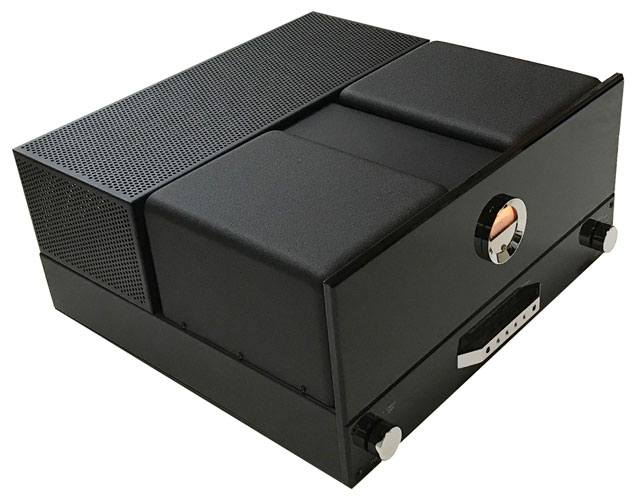




Be the first to comment on: VAC Renaissance Mk V Preamp and Signature 200 iQ Amplifier